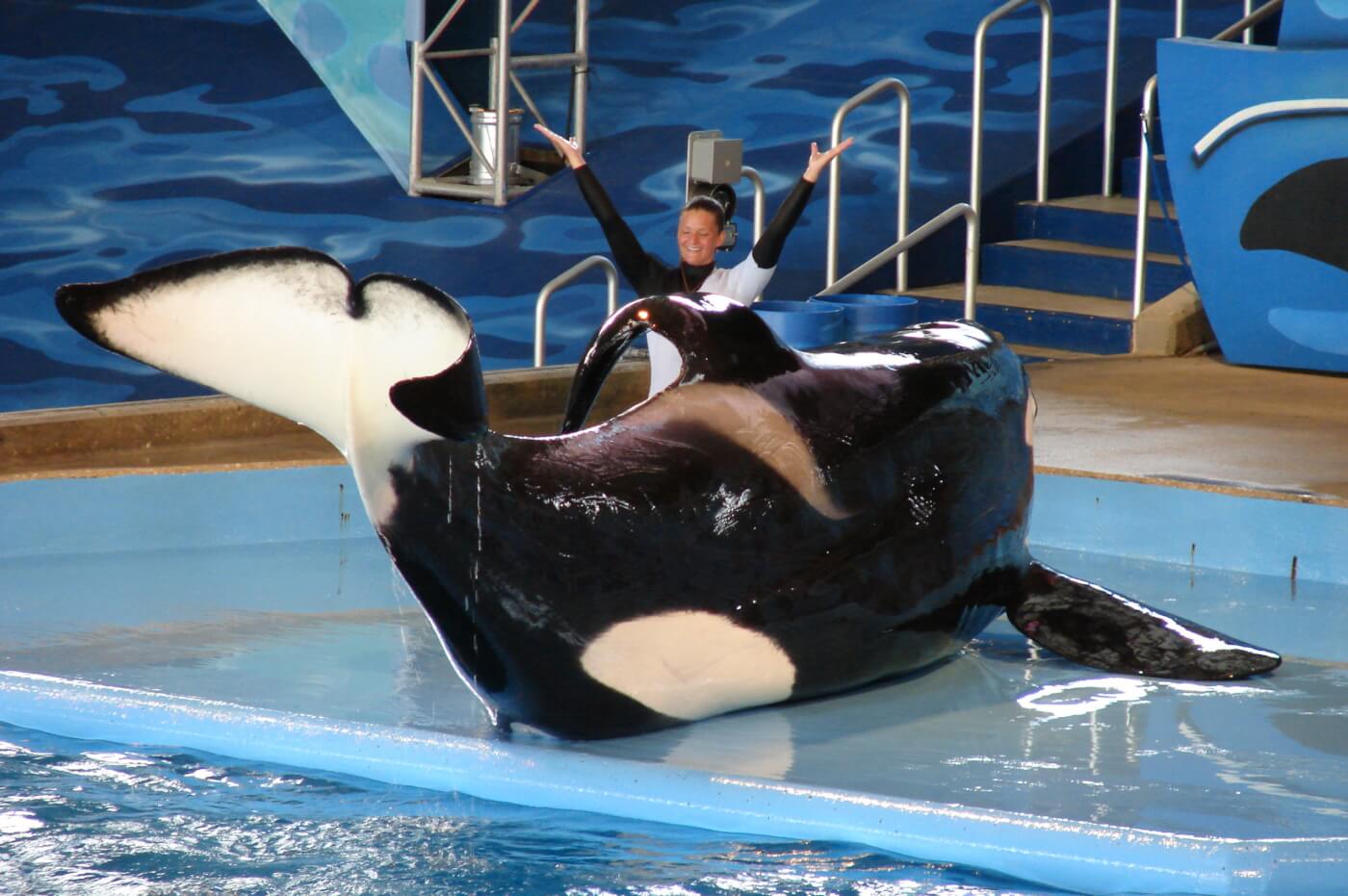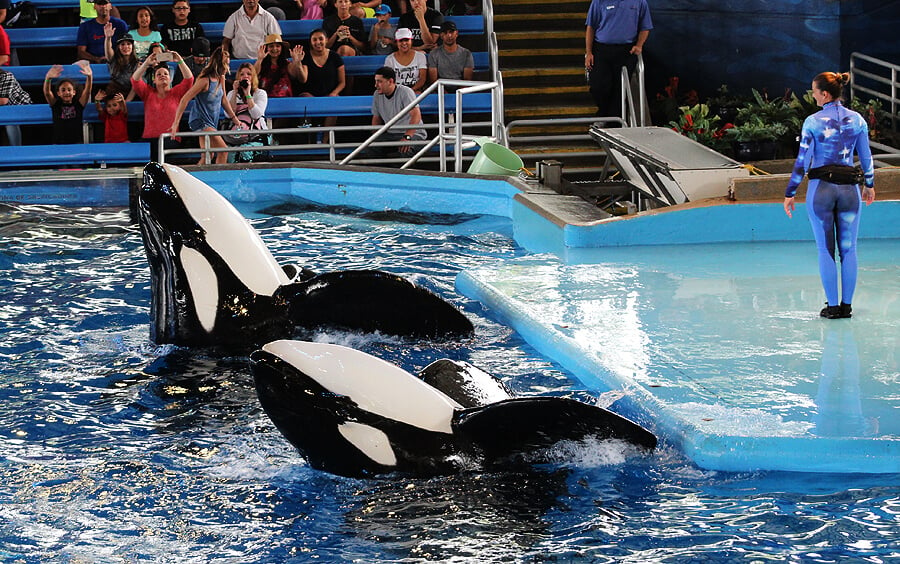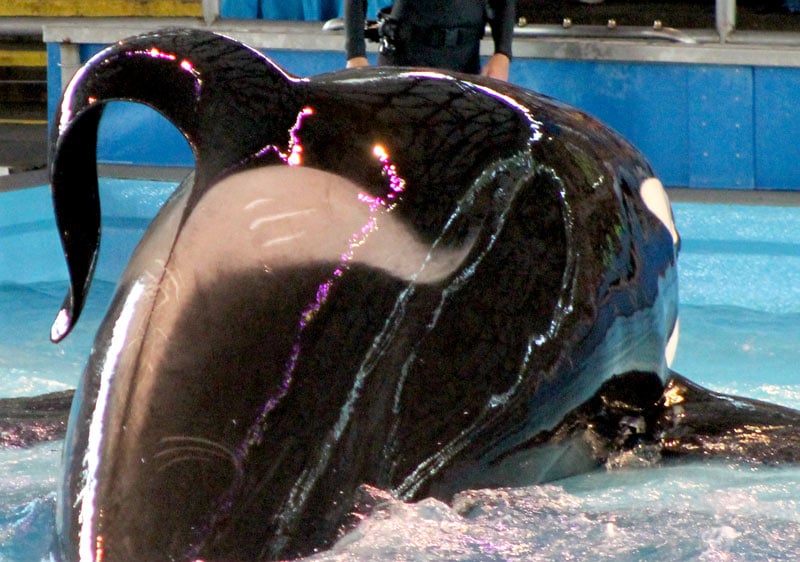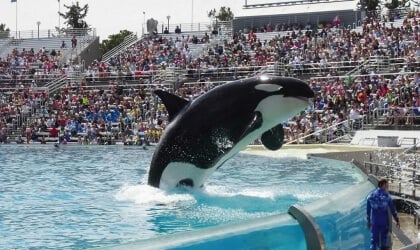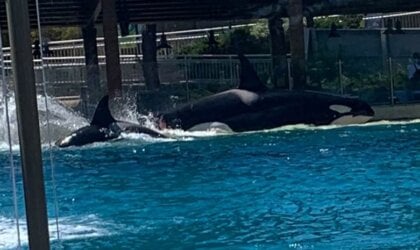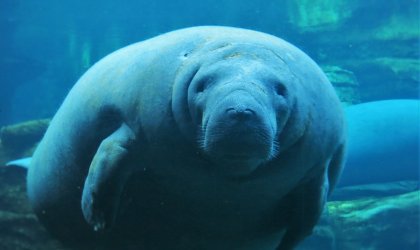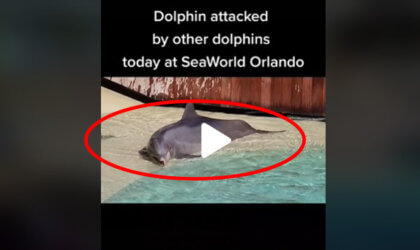On December 24, 1991, a male orca named Kyuquot was born at the rundown Sealand of the Pacific aquarium in British Columbia, Canada. Decades later, he remains captive—his prison now is SeaWorld San Antonio.
Here is Kyuquot’s tragic story.
The Early Years
Kyuquot was born to mother Haida II and father Tilikum, whose own tragic life was revealed to millions in the 2013 documentary Blackfish. In 1982, Haida II was abducted from her North Atlantic home waters near Iceland. In 1983, she was transferred from an Iceland aquarium to Sealand of the Pacific, where she later gave birth to Kyuquot. On January 8, 1993, she and Kyuquot were transferred to SeaWorld San Antonio. (Tilikum had been transferred a year earlier to SeaWorld Orlando, where he remained until his death in 2017.) Haida II, who had reportedly formed a close bond with Kyuquot, died on August 1, 2001, after developing a brain abscess—a bacterial or fungal infection had caused a collection of pus to develop in her brain. Although the estimated average life expectancy of female orcas in nature is 50 years, Kyuquot’s mother died when she was only about 20 years old. He was just 9 years old at the time.
Life Existence at SeaWorld
Weighing more than 9,000 pounds, Kyuquot is the largest orca imprisoned at SeaWorld San Antonio—a disconcerting fact, considering that the park’s tanks are shockingly small and don’t support natural orca behavior patterns. In their ocean habitat, orcas swim up to 140 miles a day—it would take Kyuquot more than 4,280 laps around his tank to swim the same distance.
Orcas at SeaWorld Are Driven to Lash Out
Kyuquot and other orcas confined to cramped SeaWorld tanks are deprived of everything that’s natural and important them—such deprivation causes them stress, and that stress sometimes causes them to snap.
Kyuquot has been involved in numerous incidents involving trainers, the most notable of which was his July 2004 attack on SeaWorld trainer Steve Aibel.
Kyuquot body-slammed Aibel multiple times—dunking the trainer and swimming over him, blocking every attempt at an exit that he tried to make. Although Aibel reportedly walked away uninjured, Kyuquot was allegedly banned from future water work.
Kyuquot’s bout with Aibel was hardly an isolated incident.
SeaWorld’s history is full of similar catastrophes, including one in 2010 between Kyuquot’s father, Tilikum, and trainer Dawn Brancheau that left Brancheau dead. Sealand of the Pacific shut down because of a 1991 incident in which trainer Keltie Byrne was killed after slipping and falling into a pool—she drowned after Tilikum, Haida II, and a third orca repeatedly dragged her underwater.
A Collapsed Dorsal Fin
In 2015, wildlife veterinarian Dr. Heather Rally visited SeaWorld San Antonio and later revealed that adult male orcas at the abusement park had collapsed dorsal fins. This is a condition that rarely occurs in orcas in nature. In captivity, it’s believed to result from a combination of limited space and extended time spent above the surface of the water. As seen in the photograph below, Kyuquot has a completely collapsed dorsal fin.
While visiting SeaWorld San Antonio—where, at the time, six orcas were being housed—Rally also identified rake marks on several of the orcas and observed many with dental trauma.
Kyuquot and Other SeaWorld Captives Need Our Help
SeaWorld may have ignored our calls to free Tilikum, but the marine park can still do right by Kyuquot and all the other animals it holds captive.
Saturday, December 24, is Kyuquot’s 31st birthday. Tell SeaWorld to give him the greatest gift of all: his freedom.
Click below to urge SeaWorld to send the animals confined at its parks to sea sanctuaries and to end its use of animals, before it’s too late—again.

